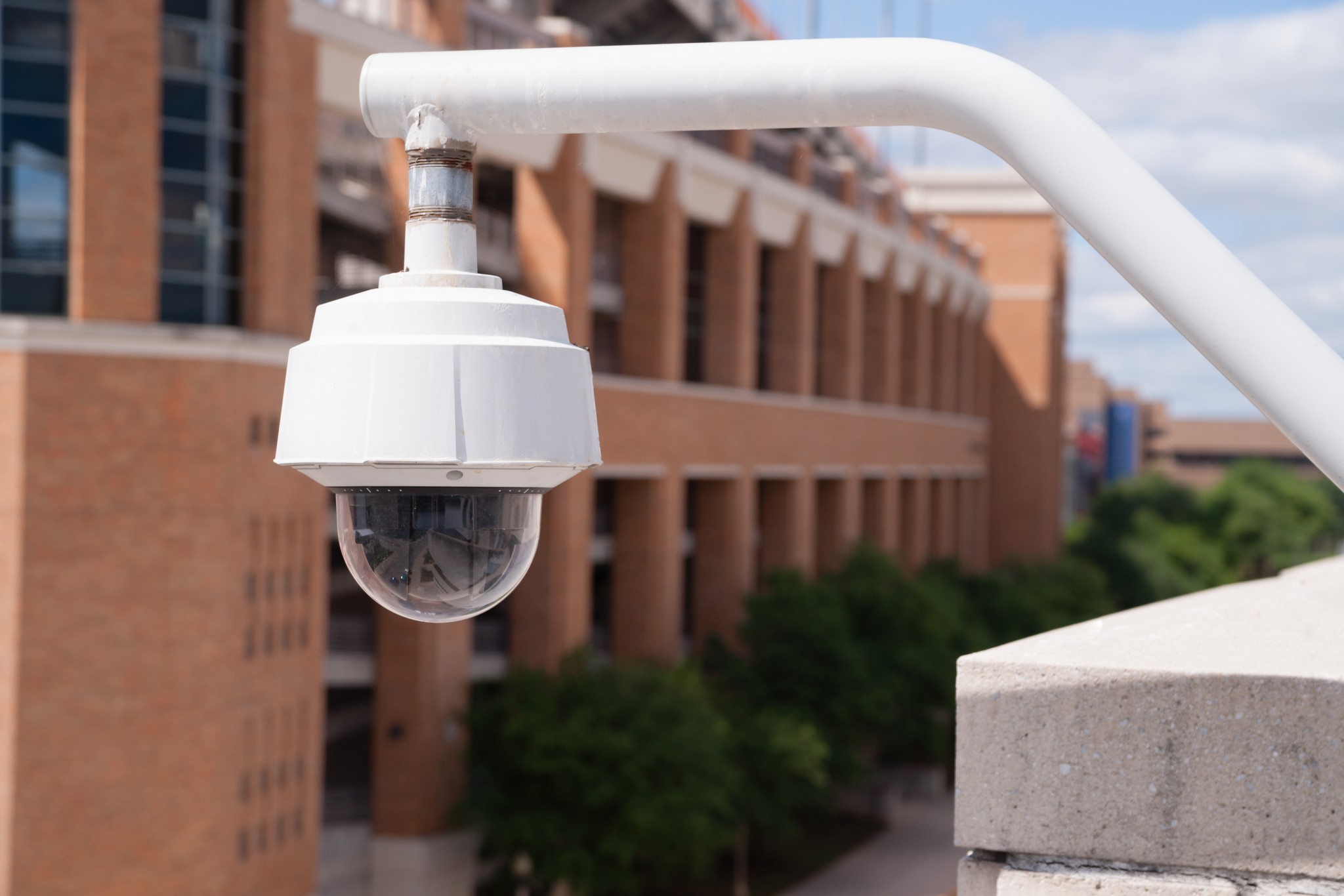When a crime or accident occurs at a business or organization, the end result is often more questions than answers. If there was no one around to see what happened, or everyone involved was in a state of distress, gathering the facts can be near to impossible. Fortunately, there is an answer, having a video surveillance system on site. A video surveillance system can provide missing information and be a critical resource when an incident, or crisis situation, occurs.
What is a video surveillance system?
A video surveillance system consists of a series of strategically placed cameras that monitor and record activity for either real-time or future review. There are three main types of video surveillance systems, analog, HD analog and IP-based.
Analog systems have been around for many years and convert recorded material into a format that can be stored on DVR. Newer, HD analog systems, use UTP and coax cable to send uncompressed video signals to DVR recorders and IP encoders. These recorders are normally considered “tribred,” meaning they can accommodate analog (NTSC video), HD digital analog (normally HD/720 and UHD/1080 resolutions), and IP-based camera (HD and multi-megapixel) signals.
More recently, IP-based systems have gained market share for their high definition and multi-megapixel video capabilities, as well as their ability to use a centralized server, or headend, and recorders that are not dependent on site recording hardware. IP-based systems can also use various IP Ethernet transmission medias such as fiber, wide area networks (WAN), and wireless microwave.
What are the benefits of a video surveillance system?
Unless a business has the financial means to support on-site security personnel 24/7, there is no way to have “eyes” monitoring a property 24/7. Even if security personnel are employed, they can only capture what is within their line of view and eye witness testimonies have been proven to be fairly unreliable. Having a video surveillance system solves these problems, while also providing a host of additional benefits such as:
· 24/7 protection and peace of mind
· Ability to review an incident to gather and check facts
· Ability to discourage both internal and external theft with visible cameras on the property
· Increased likelihood of identifying and apprehending a suspect
· Ability to target an investigation, for example using a license plate number or color of a car
· Ability to create customized system capabilities designed around particular business needs
· Ability to integrate into existing security system infrastructure, such as setting cameras to point to the area of a triggered alarm
What are the top considerations when selecting a video surveillance system?
There are many considerations when reviewing any component of a business or organization’s overall security plan, this is especially true regarding the multitude of capabilities and features available for video surveillance systems. Some of the most important considerations include:
· How the system is going to be used, as well as expectations and uses for output
· Whether the system will be analog, HD analog, or IP-based
· Camera type and capabilities, such as, pan-tilt-zoom or PTZ, night-vision, license plate readers, facial recognition, and fire detection
· Camera field of view and number of cameras necessary to prevent blind spots
· Ability to flag certain events and notify appropriate parties, such as motion detection
· Camera ability to withstand the elements
· Whether or not it is necessary to record audio
· Quality of video recorded, and whether or not the camera can record in HD
· Required storage space for recordings, whether on the network or DVR, based on retention period, number of cameras, resolution, frame rate, compression, and scene activity
· Integration capabilities with current security system infrastructure
Be it an accident, theft, unauthorized access, or even to confirm a false alarm, having well placed cameras, and the ever watchful eyes of a video surveillance system, is a crucial component in keeping your employees, assets, and business secure and protected.
If you would like to learn more about potential applications for a video system in your organization, we would be happy to provide a one-on-one consultation to answer any questions and help you determine what might be the best system for you. Please reach out to our Surveillance Systems Integrator, Jeff Hinckley at 207-450-3637.



Leave A Comment